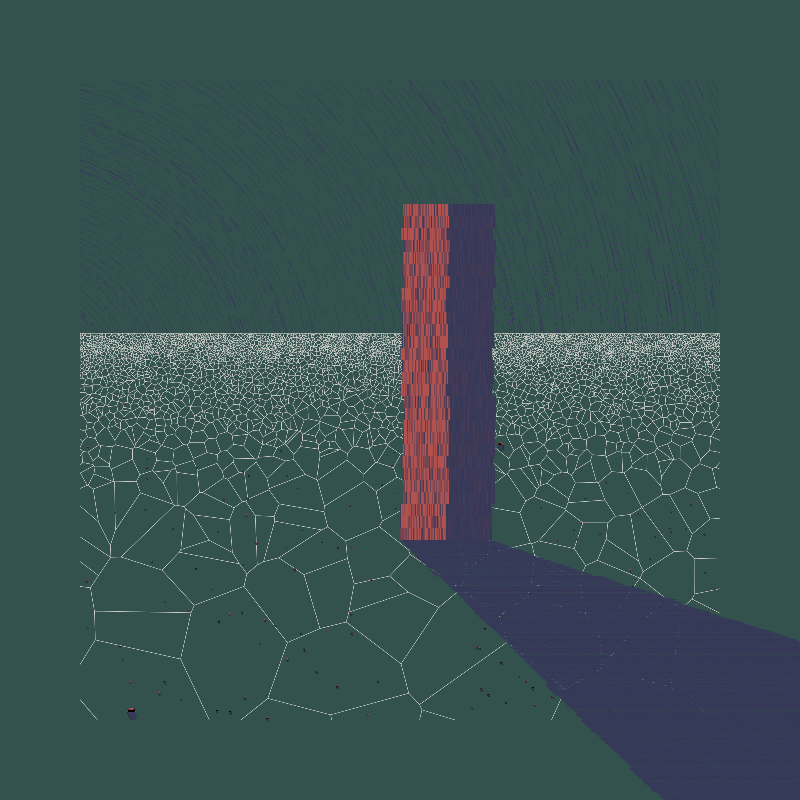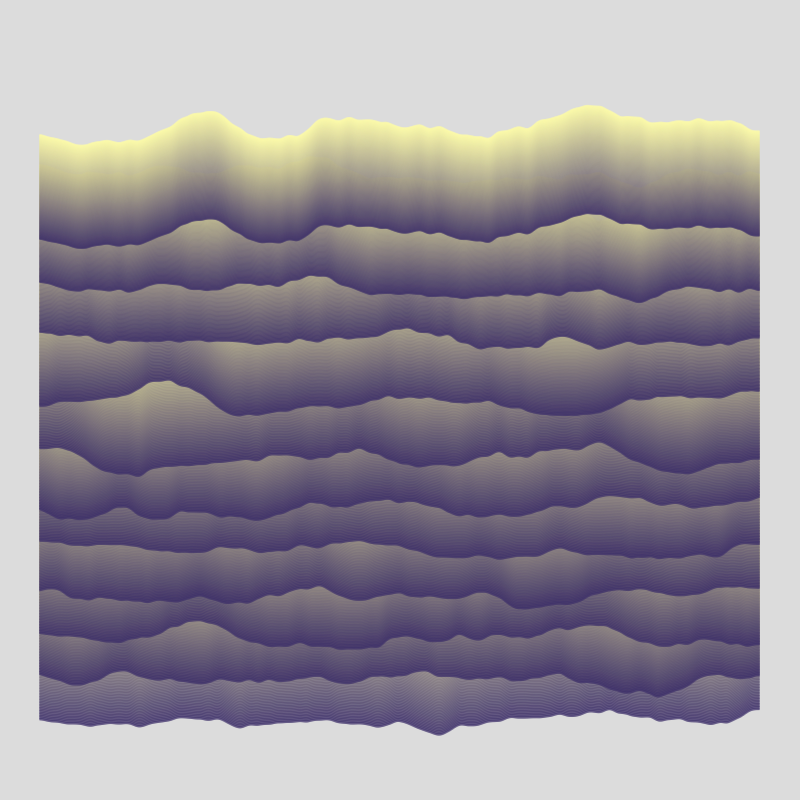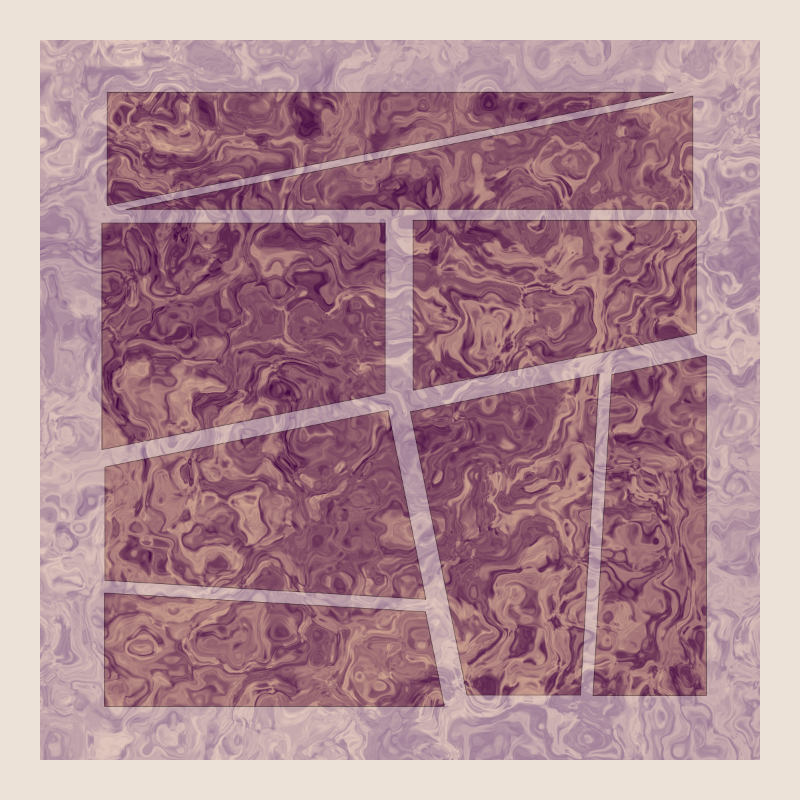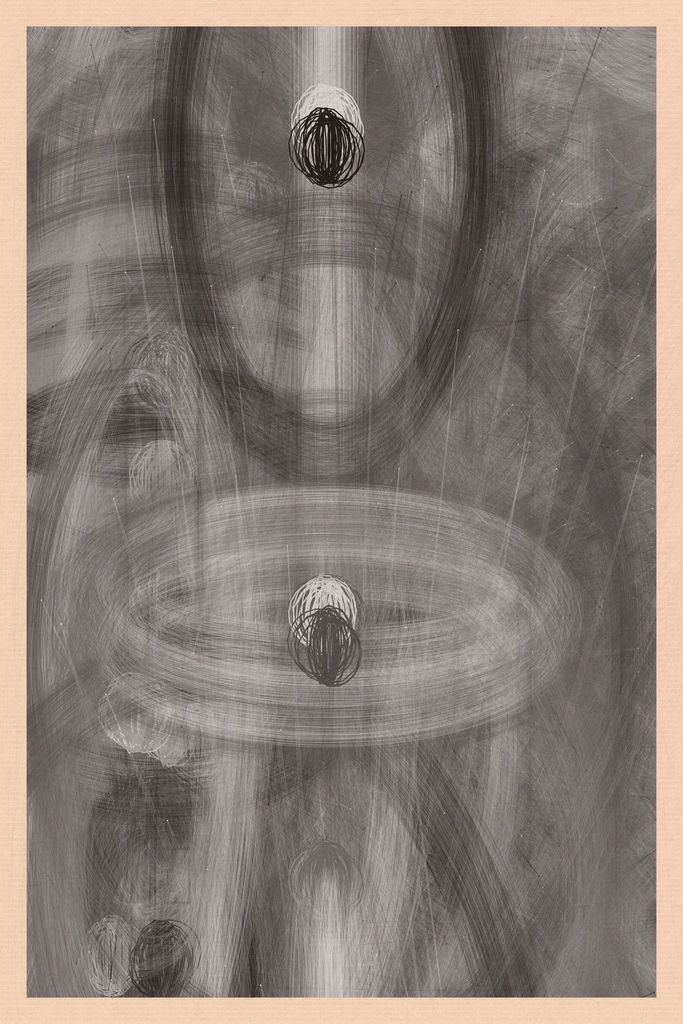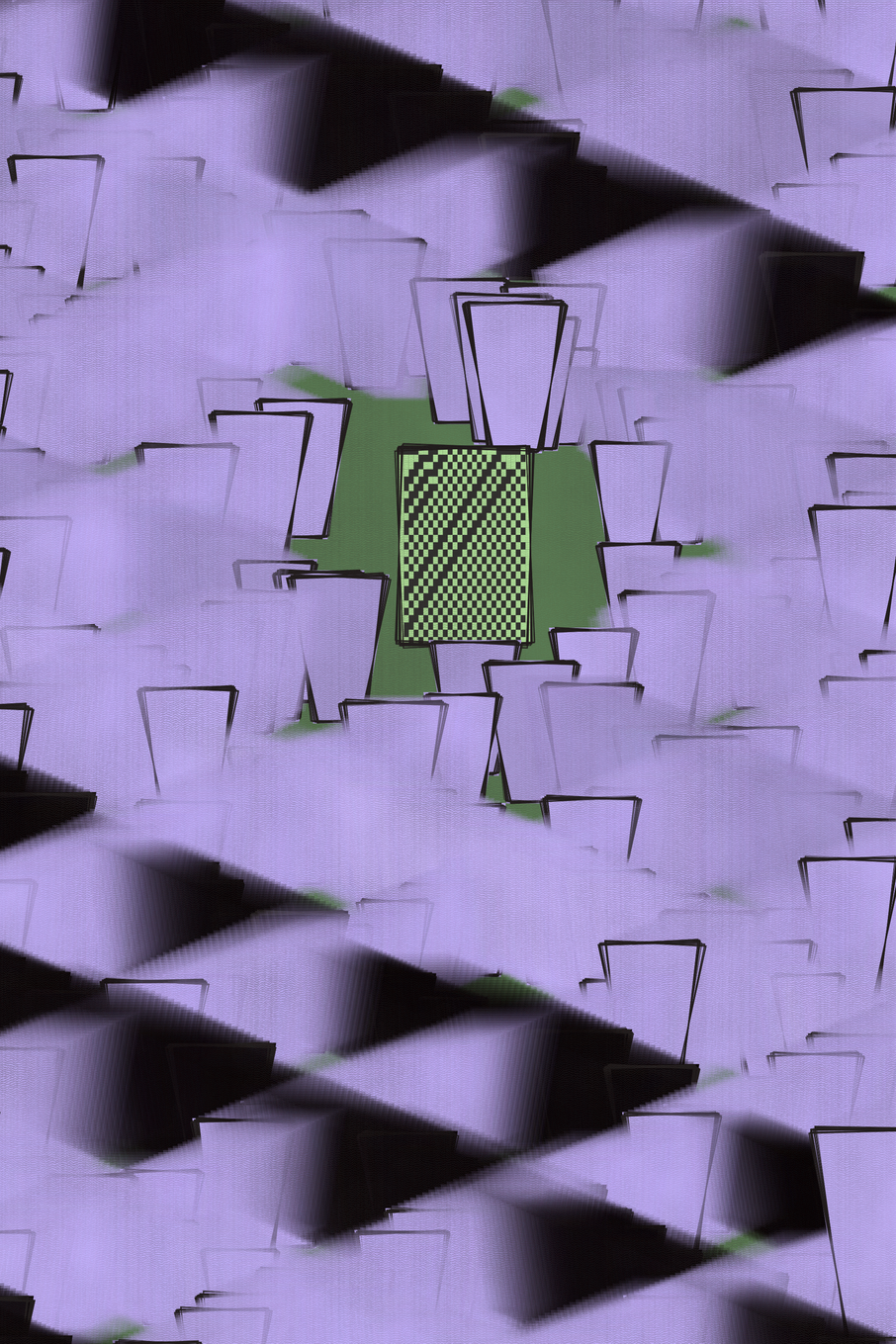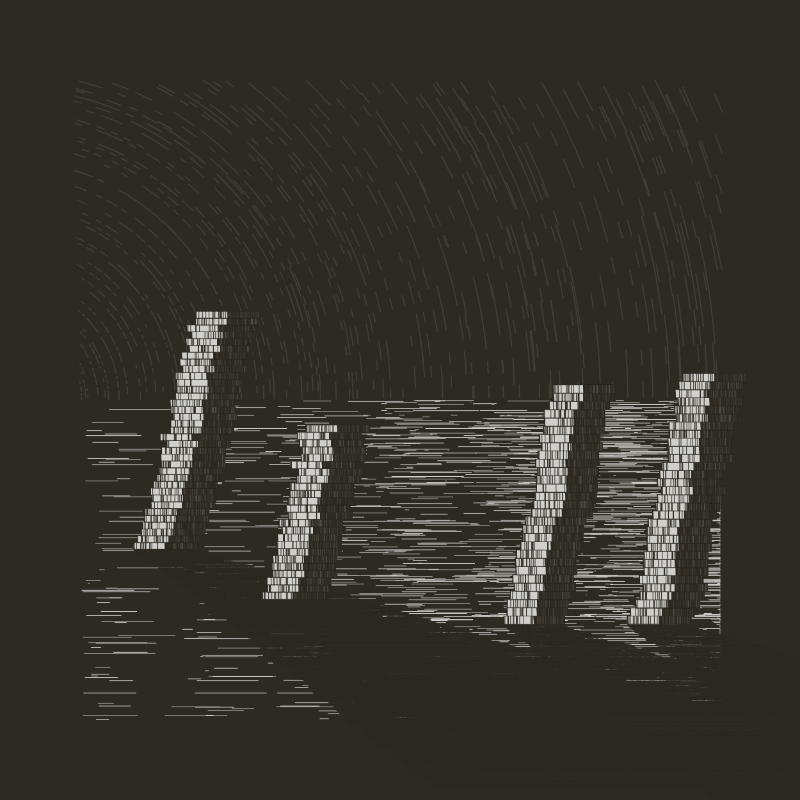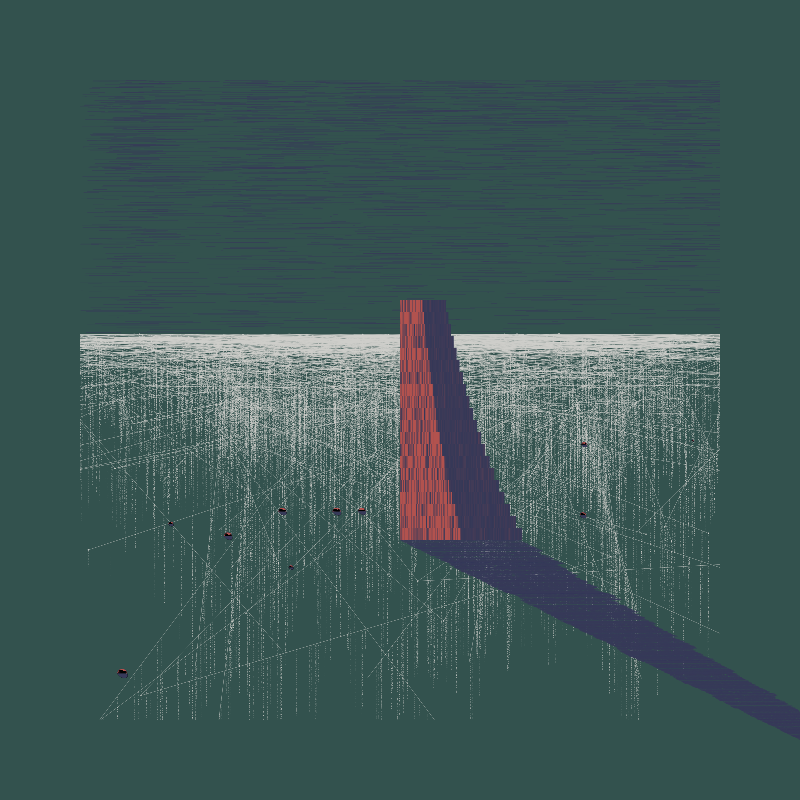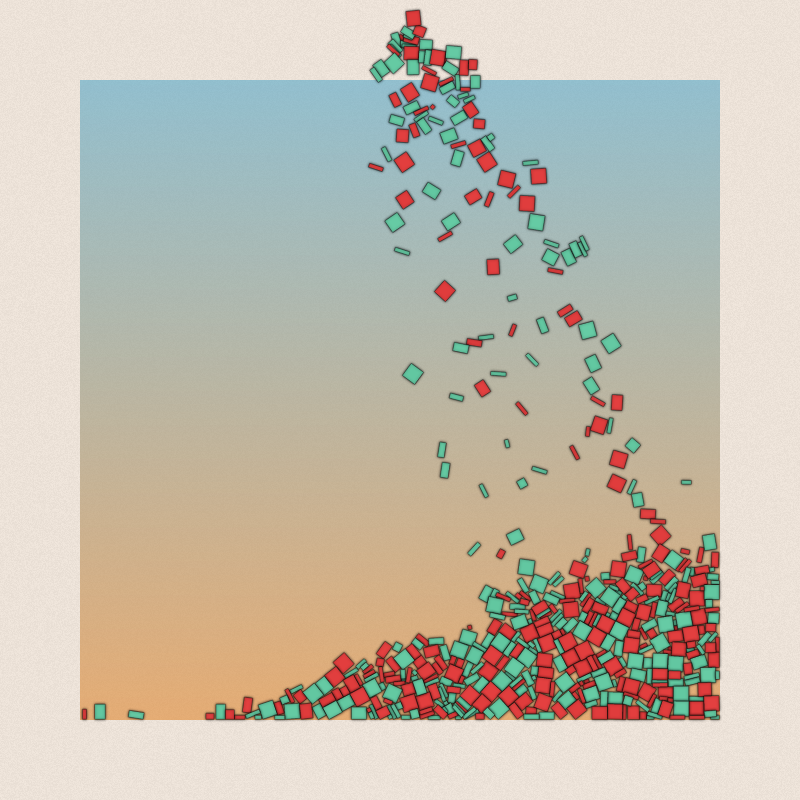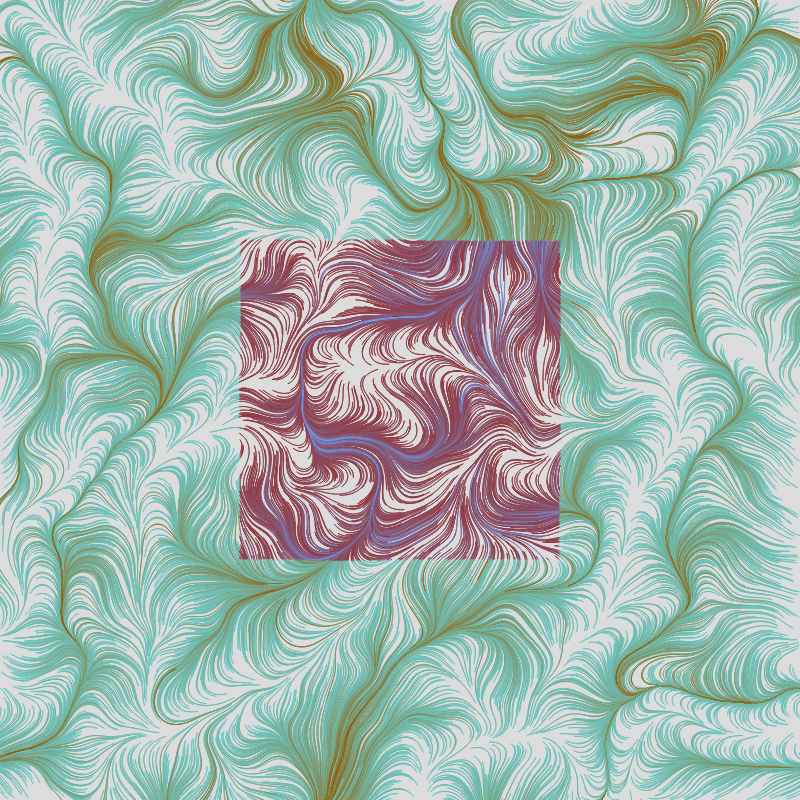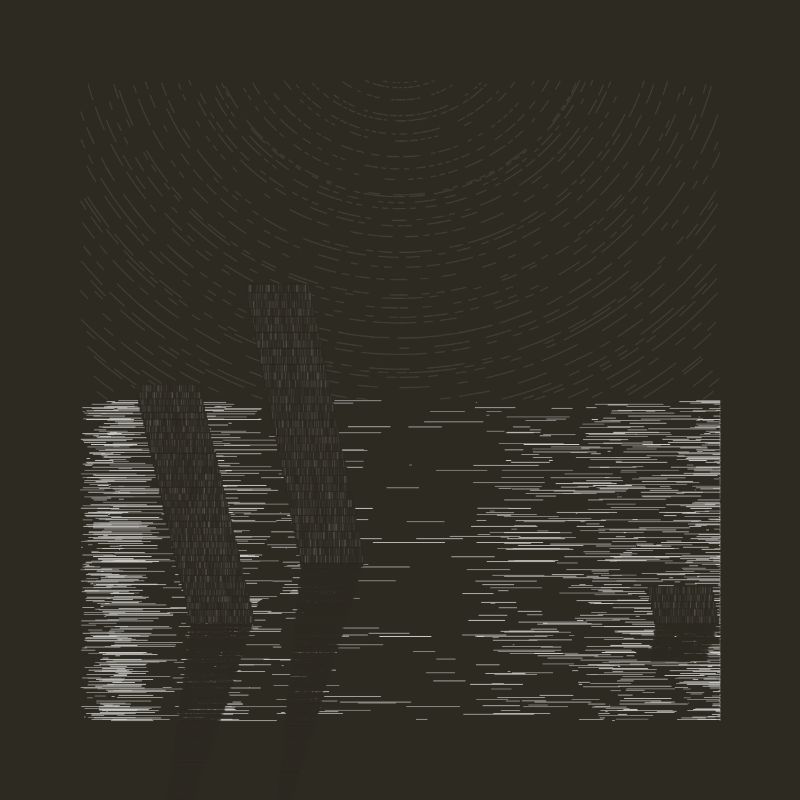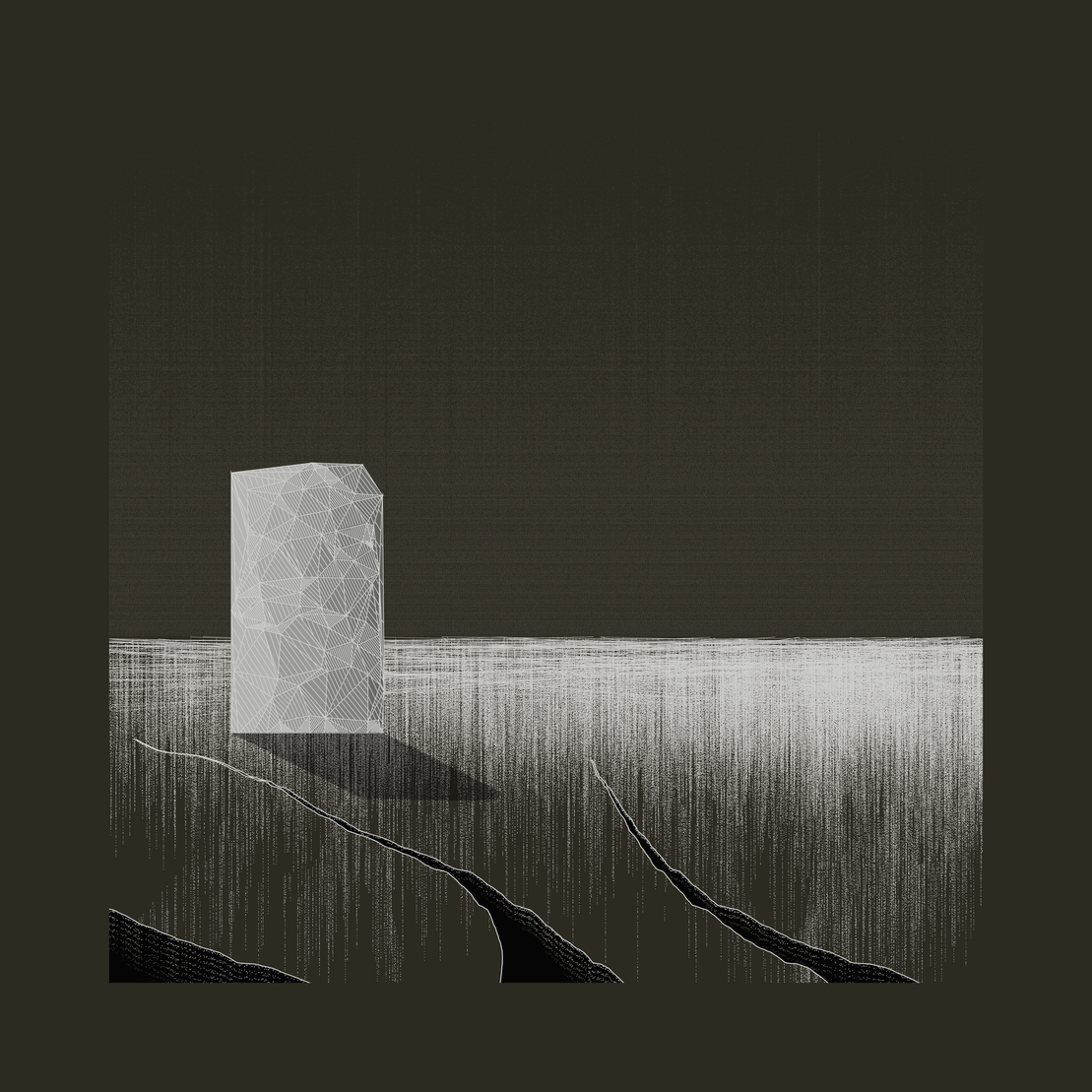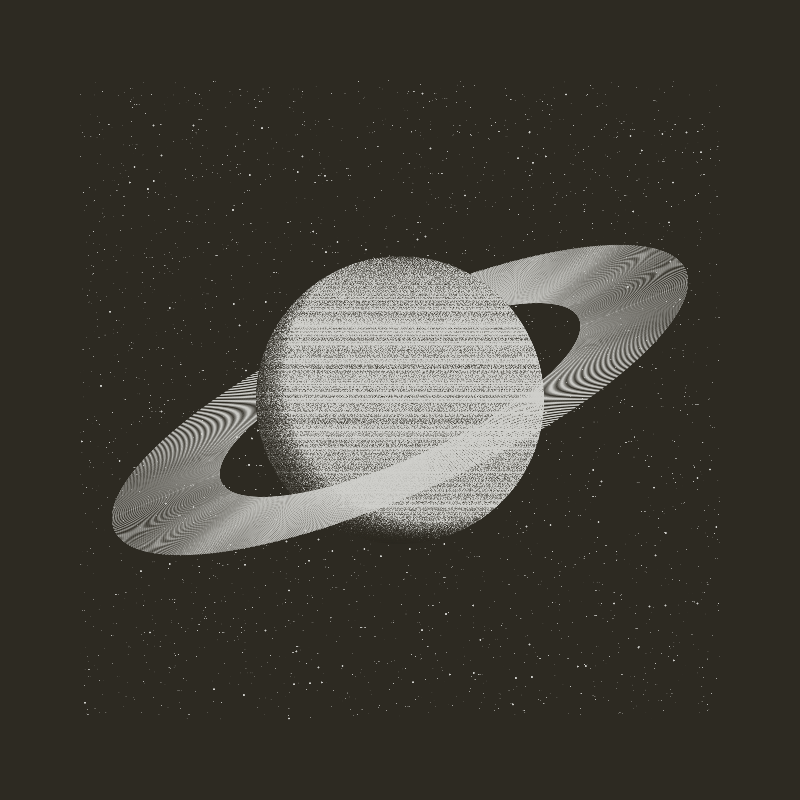Who are you?
Hi, I’m Mikkel Hansen. I’m a physicist who went into data science and now spends the majority of his spare time doing generative art. I live in Køge, Denmark, with my wife and daughter. I’m 33 years old.
How did you hear about FxHash?
I was minting my generative work on HeN, but after the Big Disaster (the site was taken down without warning), everything died down for a few months. I felt like I didn’t have a place to mint my work and wasn’t seeing any sales.
Fxhash caught my attention when I started seeing a lot of Tweets about opening and closing hours for the site. People clearly cared about access to the site, and it seemed like it had the same energy as the early days of HeN. I specifically remember Ciphrd letting people vote on whether or not to open the “flood gates” even though the site was buggy. People wanted it open despite the bugs.
“Questionable weather” was your Genesis mint on FxHash. What was the process for creating this work?
I wanted to learn Processing because that seemed to be what most people used. My work on HeN was all done in Python and MatplobLib, which isn’t exactly built for generative art. I also wanted to do something that wasn’t based on iterated function systems.
“Plains” was your second FxHash work. What inspired this work?
I bought the Generative Design book to learn more about Processing. Plains is a derivative of one of the examples in that book. I reimplemented the basic walker class and refactored the code to fit my own style and to make sure I understood what was going on. My main additions are the palettes and the shapes with inverted colors.
It isn’t my most original work, but I like how it looks, and I was still very early in my learning path for processing — you can tell by the fact that it is relatively low resolution and reruns everything on resize, rather than working in a fixed buffer and copying the content over to an image. It’s a flow-field piece, and I think every generative artist should do at least one of those.
Tell us more about your work “After The Fall."
First, I want to tell you how it started: I was browsing Nicholas Rougeux’s (@rougeux) project to restore and reimagine J.G. Heck’s *Iconographic Encyclopædia. It’s a fantastic project, and the steel engraved plates are stunning. I had been struggling with texture in my previous works, so I thought that it would be a good learning experience to attempt to recreate some of the images from the plates. For this reason, the piece that eventually became After the Fall resides in a folder called Landscape.
The image I tried to recreate had stratified rock formations rising out of the ocean. I failed at recreating these, but at some point, I had something that looked a bit like structures from an ancient civilization. I enjoy visiting such sites when I travel, so I decided to build upon that look, and that’s how I got from Landscape to After the Fall.
After the Fall wasn’t intended to be a sci-fi piece, but someone on Twitter said they loved the dystopian sci-fi vibe when I shared works in progress. This wasn’t the look I was going for — I think it was based on a misunderstanding of the sunset background, which looks a bit like a long exposure of a night sky. I read a lot of sci-fi, though, so I decided to embrace it, and that’s how the description went from “The remains of a civilization” to “The remains of a civilization that have long since left for the stars” — a small but significant change for the series as a whole.
It was supposed to be a single release, so how did I end up with plans for a sci-fi-inspired epic told in six installments? The release didn’t go very well — I think it sold 40 pieces the first day — so one of the collectors reached out to me and asked when (not if) I would burn the rest. Burning was a fairly common strategy for increasing secondary sales at the time, but there are few things I despise more than burning my work in an ill-fated attempt to satisfy the Market Gods. Surely there must be a better way to increase value for collectors. Perhaps continuing to build on the work would do the trick. In any case, I found the idea of telling a story through generated images appealing, so why not give it a go?
In Search of a New Home is the second release, and it doesn’t seem to have done anything for After the Fall’s market activity, so perhaps this won’t increase secondary action at all, but I enjoy working on it.
If you want to know more about the Rise & Fall series, I suggest looking at the Deca gallery or the dedicated site I set up for the project.
When do you know when a work is ready to be posted on fxhash?
For the first six projects leading up to After the Fall, my strategy was “mint and learn”. I wanted to learn a new technique or skill with each release and keep a good pace. Whenever I felt like I had learned what I wanted to, I’d mint the piece.
Now I focus less on the technical aspects and more on what I want to communicate with the art. This has significantly slowed my release pace — it now takes months rather than days or weeks to finish a piece — but I don’t mind that. I release a piece when I feel like it would take me months to make a significant improvement or if all changes I try seem to take the piece away from the original intention.
I’ll often tire of working on a piece, and when I spend more time dreaming up new projects, it usually means it is time to try and wrap it up. Wrapping up might still take a long time, though. I do almost all of my work in the evening when my daughter sleeps, which means I have maybe 14 hours in a good week, so keeping my motivation and excitement is critical otherwise, this would just be a low-paid night gig, which doesn’t make much sense to me.
Tell us about your latest collaborative work with pxlshrd “pause”
I started the piece because I wanted to do something visually inspired by long-exposure photography of people standing still in crowds. I got the idea because the overall crypto space was crashing, but Fxhash was pumping. It often felt like everything was moving so fast around me, and I couldn’t keep up.
I love pxlshrd’s Breeding Grounds — the palettes and subtle textures are masterfully done — so when I started work on this project, I used the Breeding Grounds code base to get started. I did this because I wanted to see how it was done and because I wanted something that looked good quickly. After playing around for a day or two I suggested to pxlshrd that we collaborate on the piece. I thought I could learn a lot by collaborating with him and that it would be a fun way to build a friendship, and I was right.
I think it’s one of my best works to date. I liked the initial vision for the piece and I think we executed it well. Financially, it is one of my worst-performing pieces. As an artist, it’s difficult to learn from such financial failures. After all, people can decide not to buy for many reasons, so I asked on Twitter. I didn’t get a lot of responses, but generally, people thought that it was too simple looking, that they could have coded the thing themselves, or they just didn’t connect with it. So what do I do with that feedback? I guess I could strive to make my next piece look more complex or challenging to code, but I don’t think I want to.
To me, this piece is a reminder that you don’t have to try to keep up with the crowd. You can do things at your own pace.
What do you have planned for the future?
I want to build out the Rise & Fall universe. The six releases I have planned for fxhash are just the beginning. I’ve created a collection on Objkt that I want to fill with 1/1 and x/x work that tells stories that aren’t as easily told through fxhash.
I want to elaborate on the purpose of the structures in After the Fall — I think of them as a mix of terraforming factory and temple. The idea is that the civilization has been traveling from planet to planet for so long that the terraforming process has taken on religious meaning. I want to see if I can communicate this visually. It will be an interesting challenge.
I’d also like to tell more stories about the voyages between the planets. How big is the fleet? What does life on the fleet look like? I don’t know, but I’d love to find out.
These are vague ideas that I want to explore further. I hope to work on this for years to come. Whenever I need a break from Rise & Fall I’ll work on improving my abstract generative art skill.
Why do you make generative art?
Why indeed. I’m not sure. I think there are many reasons, but I suspect that most overlap with why I studied physics — a fascination with mathematics, a desire to construct simple systems, and the thrill of discovery.
In physics, we sometimes try to explain some very small, well-defined section of nature. The thrill comes when you manage to construct a model that describes the phenomena neatly and simply. If you are lucky the model will also make predictions about phenomena that have yet to be observed. Other times we expose systems to various conditions, just to see what will happen. Perhaps the system will do something unexpected and interesting.
I think it’s the same with generative art. Sometimes we try to build algorithms that give some output we have in our minds eye, and other times we just play around to see if something interesting will come of it.
Is there anyone you'd like to shoutout?
I got into NFTs because of Thomas Lin Pedersen (@thomasp85) and Nadieh Bremer (@NadiehBremer). I had been following both for years because of their work in Data Visualization and started looking into NFTs when they started releasing their artwork — so thank you for that.
Anything else?
I’m excited to see how this space will evolve over the next 2-5 years. Also, I think pxlshrd’s **Breeding Grounds** is one of the most underrated pieces on fxhash.
Note for collectors
Three collectors of this article will be gifted a set from the "Rise & Fall" collection by Mikkel Hartmann. The set includes "After the Fall", "Under a New Sky", and "In Search of a New Home". This means three lucky collectors will be each taking home three works by Mikkel Hartmann.
